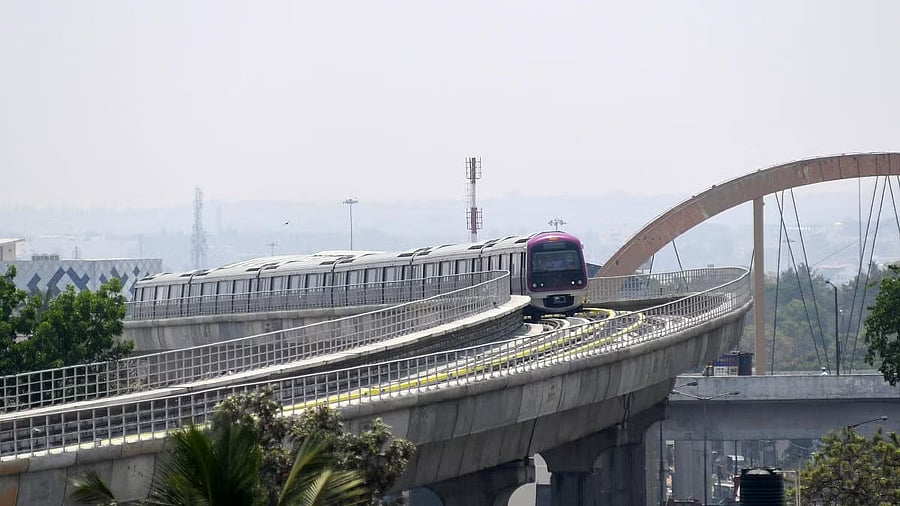
Namma Metro
Credit: DH Photo
Bengaluru: After nearly eight years, Namma Metro is poised to hike fares by 40-45 per cent, following the recommendations of a three-member government panel, according to highly placed sources with direct knowledge of the matter.
The fare fixation committee — the first for Bangalore Metro Rail Corporation Limited (BMRCL) — consisted of Justice (retired) R Tharani, Ministry of Housing and Urban Affairs Additional Secretary Satinder Pal Singh and retired IAS officer from Karnataka EV Ramana Reddy.
The committee sought public feedback between October 2 and 28, 2024. Its tenure ended on December 16, and it submitted its final report to the BMRCL board last week.
Based on its analysis, the committee recommended a 40-45% fare hike. The base fare will rise to around Rs 15 while the maximum fare will be around Rs 85, up from the current Rs 60.
To reduce the impact, additional discounts will be offered during off-peak hours and on Sundays. Passengers using smartcards and QR code tickets will continue to enjoy a 5 per cent discount.
Under Section 37 of the Metro Railways (Operation and Maintenance) Act, 2002, the committee's recommendations are binding on the BMRCL.
The revised fares will come into force from January-end.
In 2017, the Delhi Metro Rail Corporation (DMRC) implemented a 106 per cent fare hike after seven years based on the recommendations of its fourth fare fixation committee.
The sources are confident that the BMRCL board, due to meet on January 17, will accept the committee's recommendations in toto.
The committee evaluated several factors before recommending the fare hike.
In June 2017, when fares were last revised by 10-15 per cent, Bengaluru had an operational network of 43.2 km. This has since expanded to 76.95 km (up by 73.13 per cent) and will further rise to 175.55 km (306 per cent) by December 2026 with the completion of Phases 2, 2A and 2B.
Since the last revision, operational costs have increased. Besides higher electricity charges, maintenance costs have gone up by over 300 per cent due to aging assets and the expiry of Defects Liability Period. Spares have also become expensive.
Unlike in Delhi, the BMRCL pays for security at trains and stations. It is also responsible for paying interest on external loans.
The BMRCL does not have an internally generated Current Account Surplus (CAS) to meet emergent requirements and has to depend on the Karnataka government for support.
Operational losses and loan repayments are also borne solely by BMRCL, with the state government chipping in only if the corporation is unable to manage these expenses. The Centre, despite being a joint stakeholder in the BMRCL, does not provide any support for these.
The committee was of the opinion that if the BMRCL does not have adequate cash surplus to meet growing expenses, the quality of metro services may get affected.
While the fare hike is expected to draw criticism from passengers already burdened by the 15 per cent increase in bus fares, BMRCL sources argued that the cumulative impact would have been less severe if fares had been revised annually.
But despite this hike, the sources explained that the BMRCL would not be in a position to fully repay loans on its own.
The BMRCL sources explained why the metro fare hike was substantially higher than the bus fare increase.
"Take the BMTC, for example. It's responsible only for buses, staff salary and depots. But we have to maintain everything connected with the metro, including viaducts, tracks, signalling and Automatic Fare Collection systems, traction, RSS (Receiving Sub Station), train depots, etc. Given the quality of service we provide and the cost involved, our fare hike is much higher," a source said.
Fare chart
Current fare: Rs 10-60
Revised fare: Rs 15-85
BMRCL's gross revenue (Nov '24): Rs 62.14 cr (Rs 2.07 cr per day)
Expected additional revenue after fare hike: Rs 80-90 lakh/day
Discounts will be offered for travel during off-peak hours and on Sundays.